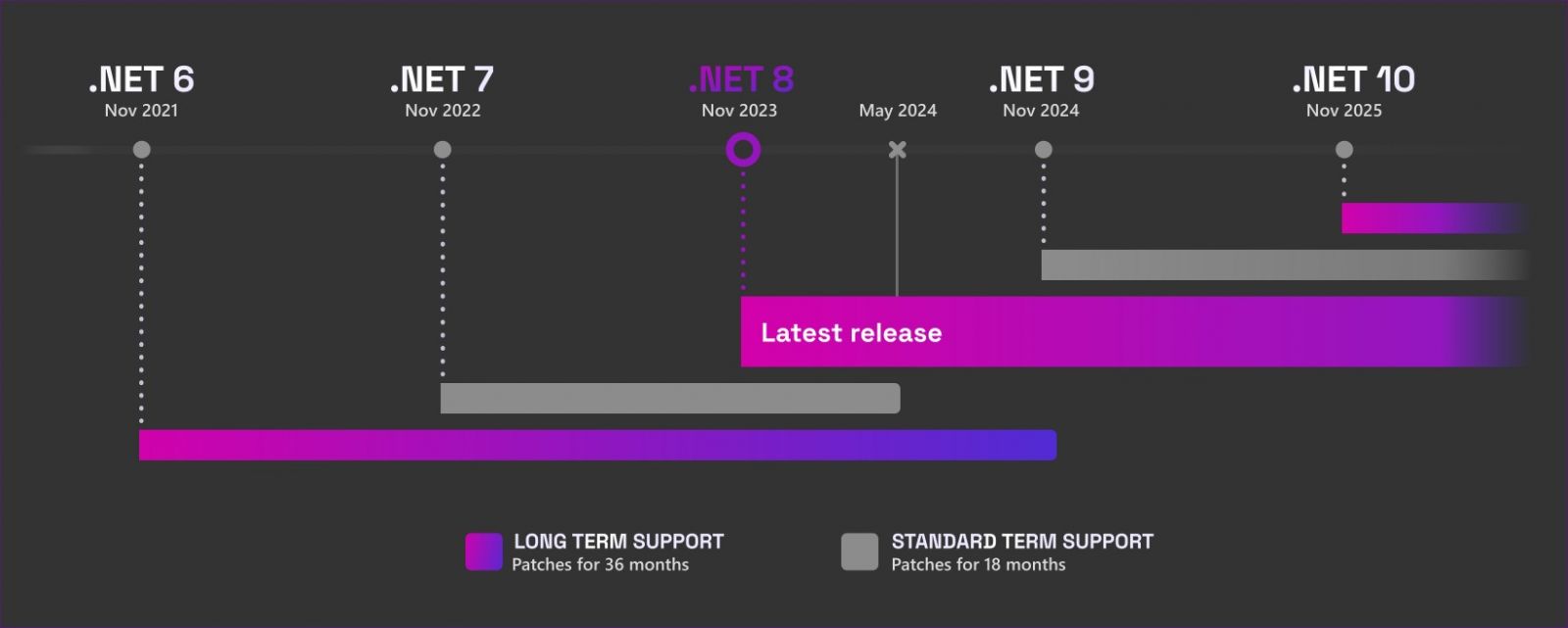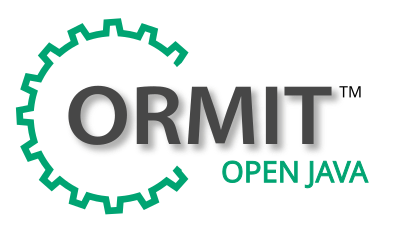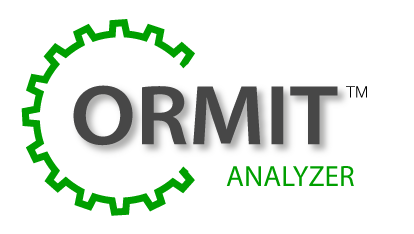Oracle Forms to .NET Migration
Oracle Forms to .NET Migration
While .NET offers many benefits, several organizations have experienced challenges and failures in their migration projects. These issues have caused numerous projects to fail in achieving their goals.
Titleimage
Posted by Patrick Hamou on 2024:07:29 11:34:18
Oracle Forms
Oracle Forms, a staple in enterprise application development, has been a trusted tool for building sophisticated, data-driven applications. Oracle Forms was introduced in the late 1970s as a part of Oracle's comprehensive suite of development tools. Its primary goal was to simplify the creation of data entry systems for Oracle databases. Designed for rapid development and deployment, Oracle Forms has enabled organizations to create efficient and robust applications for over four decades. However, the evolving technological landscape and changing business needs have led many to reconsider their reliance on this aging technology. Despite its long-standing success, the need for modernization has become increasingly apparent.
Surge in Oracle Forms Migrations in 2024
In 2024, the migration from Oracle Forms has seen an unprecedented surge, largely driven by the advent of revolutionary automated tools that have transformed the migration process. Historically, migrating from Oracle Forms was a labor-intensive, manual task, requiring extensive code rewrites and leading to long project timelines and significant costs. However, the introduction of advanced automated tools has drastically changed the landscape. These tools can now handle over 90% of the migration process, converting legacy Oracle Forms and PL/SQL code into modern applications with minimal human intervention. This automation not only reduces the time and cost associated with migrations but also minimizes the risk of errors, ensuring a smoother transition. As a result, more organizations are now embarking on migrations that were previously deemed too complex or costly.
Why Migrate Oracle Forms in 2024?
Dependencies and technological limitations, deprecation of Important Oracle Forms components, license cost savings, Oracle Forms talent shortages and availability of more flexible solutions are the most compelling reasons to migrate Oracle Forms to a more modern code base.
Dependencies and technological limitations
Oracle Forms is a closed-source technology that trails behind modern, open-source frameworks like Angular and React. Its architecture, including its reliance on specific Java versions for each client machine, complicates maintainability and hampers future-proofing.
Deprecation of Important Oracle Forms Components
Oracle has deprecated several related tools, such as Oracle Reports, Oracle Graphics, and Oracle Translation Hub. Critical components of Oracle Forms are being deprecated, making it challenging to maintain and support legacy applications. This deprecation not only increases the risk of security vulnerabilities but also limits the ability to integrate with modern systems and technologies.
License Cost Savings
Migrating away from Oracle Forms can lead to significant cost savings. Oracle's licensing fees can be substantial, and moving to open-source or alternative platforms reduces these recurring costs, allowing organizations to allocate resources more effectively. Frequent licensing audits and high fees present significant challenges for customers, making Oracle Forms a less appealing option compared to open-source alternatives.
Oracle Forms Talent Shortages
As Oracle Forms becomes less prevalent, finding skilled developers and support staff has become increasingly difficult. This talent shortage can lead to higher maintenance costs and longer development times, further justifying the need for migration. Moreover, keeping Oracle Forms becomes increasingly risky as many oracle forms experts are retiring and there is no new oracle forms talent in the market. This means that organizations relying on Oracle Forms may face difficulties in application development and maintenance, resolving issues, upgrading systems, and ensuring security and compliance.
Availability of More Flexible Solutions
Modern development frameworks and platforms offer greater flexibility, scalability, and integration capabilities than Oracle Forms. These solutions enable businesses to innovate rapidly, adapt to market changes, and deliver better user experiences.
Understanding the .NET landscape
.NET, developed by Microsoft, is a versatile framework for building a wide range of applications, from web and mobile to desktop and cloud-based solutions. It provides a comprehensive set of tools and libraries, enabling developers to create high-performance applications efficiently. Long term support .NET releases offer 3 years of free support and patches before deprecation. The current version of .NET is .NET 8 which is supported until November 2026.

Advantages of .NET
.NET offers several advantages, including strong support from Microsoft, a large developer community, and a rich ecosystem of libraries and tools. Its ability to support multiple programming languages and its robust security features make it an attractive choice for many organizations.
Key Features of .NET
A Detailed Guide to the Features of .NET:
- Automatic Resource Management
- Cross-Language Interoperability
- Common Type System
- Easy and Rich Debugging Support
- Security
- Tool Support
- Portability
- Framework Class Library
.NET Framework
The .NET Framework supports several programming languages, such as C#, VB.NET (Visual Basic .NET), and F# (a functional programming language). It offers functionalities for data access, networking, cryptography, XML processing, and many other features.
ASP.NET is made of components that ship in both the .NET Framework and as external packages that ship outside of the .NET Framework. Many parts of ASP.NET are a part of the Microsoft .NET Framework, these include ASP.NET Web Forms, Controls, Modules, Handlers, and more.
Why Migrate Oracle Forms to .NET?
Most frequent reasons cited as resons to migrate Oracle Forms to .NET are microsoft backing, large scale projects support, advanced technology and availability of talented developpers.
Backed by Microsoft
Being backed by Microsoft and the .NET community ensures that .NET will continue to receive support, updates, and improvements. This backing provides organizations with confidence in the longevity and reliability of the platform.
Suitable for Large-Scale Projects
.NET is well-suited for large-scale enterprise projects, offering robust tools and frameworks that facilitate the development, deployment, and maintenance of complex applications. However, despite these benefits, it's important to consider the track record of .NET migrations.
Advanced Technology
.NET represents a more advanced technology stack, incorporating modern development practices, languages like C#, and frameworks such as ASP.NET . This technology stack enables the creation of high-performance, scalable, and secure applications.
No Shortage of Talent
The .NET ecosystem benefits from a vast pool of experienced developers. There is no shortage of talent, with plenty of experts available on the market. This abundance of skilled professionals ensures that organizations can easily find the expertise needed to support and enhance their .NET applications.
Oracle Forms to .NET migration challenges
While .NET offers many benefits, several organizations have experienced challenges and failures in their migration projects. The lack of effective Oracle Forms to .NET automated migration tools has been a major contributing factor, leading to high costs, prolonged timelines, and technical complexities inherent to manual migrations. These issues have caused numerous projects to fail in achieving their goals. Such experiences underscore the need for careful consideration and thorough planning when choosing to migrate to .NET.
.NET vs. Java Oracle Forms Migration
When comparing .NET and Java for Oracle Forms migration, several key factors come into play:
- Cost: Java typically incurs lower migration costs compared to .NET due to powerful migration automation tools being available such as ORMIT-OpenJava.
- Flexibility: Java offers greater flexibility and a larger ecosystem of tools and libraries.
- Community Support: Both .NET and Java have strong community support, but Java's open-source nature provides broader access to resources and innovations.
- Performance: Both platforms offer high performance, but the choice may depend on specific project requirements and existing infrastructure.
- Track Record: Coming from Oracle Forms, Java migrations have a more consistent track record of success compared to .NET, where many projects have faced significant challenges.
Why Migrating Oracle Forms to Java is a safer choice than .NET?
By migrating to Java, organizations can leverage significant advantages to build flexible, scalable, and innovative solutions that meet the demands of modern business environments such as lower costs through increased automation, increased flexibility, better community support, high performance and proven successful migration track record.

Advantages of ORMIT™-OpenJava
ORMIT™-OpenJava stands out as a powerful tool for migrating Oracle Forms to Java. It offers several advantages over other migration tools:
- Comprehensive Conversion: ORMIT™-OpenJava ensures a thorough and accurate conversion of Oracle Forms applications to Java, preserving business logic, functionality and enhancing performance.
- High level of Automation: The tool automates many aspects of the migration process, reducing time and costs associated with manual conversion while eliminating risks.
- Scalability: ORMIT™-OpenJava is designed to handle projects of any scale, making it suitable for simple or large and complex migrations.
- Support and Expertise: RENAPS provides expert support and guidance throughout the migration process, ensuring a smooth transition.
Additional Considerations
Challenges in Migrating from Oracle Forms
Migrating from Oracle Forms can present several challenges, including data migration, integration with existing systems, and ensuring minimal disruption to business operations. The unique particularities of Oracle Forms contribute to the complexity of such migrations.
Oracle Forms applications typically involve a variety of code elements, including 16 item types, 97 trigger types, 220 built-ins types, and 473 attributes and properties. Additionally, the architecture of Oracle Forms is three-tiered, scalable on both the application server and database levels. Database locking mechanisms, customizable from pessimistic to optimistic, and synchronous database connections further add to the intricacies of migration.
These unique characteristics make migrating from Oracle Forms a complex and particular process, requiring a meticulous approach. Careful planning and execution are essential to address these challenges and ensure a successful migration that maintains the integrity and functionality of the original application.
Impact of Migration on Business Processes and Efficiency
Successful migration can significantly improve business processes and efficiency. Modernized applications offer better user experiences, faster performance, and enhanced integration capabilities, leading to increased productivity and competitiveness. Both .NET and Java provide comprehensive solutions to achieve these benefits.
Security Considerations in Migrating from Oracle Forms
Security is a critical aspect of any migration project. Ensuring that the new platform adheres to stringent security standards and practices is essential to protect sensitive data and maintain compliance. When migrating to Java or .NET, implementing an appropriate Single Sign-On (SSO) strategy and role base access control can further enhance the security of the system while benefiting end-user experience.
By integrating the appropriate security measures and strategies, organizations can significantly enhance the security of their migrated systems. This approach ensures robust protection for sensitive data, maintains regulatory compliance, and provides a secure, user-friendly experience for all stakeholders involved.
User Experience Improvements Post-Migration
Modern platforms like .NET and Java both offer significant improvements in user experience. Enhanced interfaces, faster performance, and better accessibility contribute to higher user satisfaction and adoption rates.
Cost-Benefit Analysis of Oracle Forms Migration
Conducting a cost-benefit analysis helps organizations understand the financial implications and benefits of migrating from Oracle Forms. This analysis includes upfront costs, long-term savings, and the potential for increased revenue and efficiency. One crucial tool in this process is the ORMIT™-Analyzer, which plays a vital role in analyzing an Oracle Forms application prior to any migration project.
The ORMIT™-Analyzer provides comprehensive insights that are essential for successful migration planning. Key outcomes from the analysis include:
- X-Ray Scan of All Current Oracle Forms Objects: This includes FMB, MMB, OLB, PLL, and RDF, providing a detailed overview of the existing forms.
- Detailed Built-In and All Other Forms Instructions Counts per Module: Understanding the volume and complexity of code within each module.
- Forms Complexity Analysis: Evaluating the complexity of the forms to identify potential challenges and required efforts.
- Forms and Reports Source Code Quality: Assessing the quality of the existing source code to determine necessary improvements.
- Business Logic Distribution: Mapping out the distribution of business logic across the application.
- Obsolete Features Count per Module: Identifying deprecated features that need to be addressed during migration.
- Order of Migration Based on References and Dependencies: Determining the optimal sequence for migrating modules based on their interdependencies.
- Dead Code and Code Reduction Analysis: Identifying and eliminating unused or redundant code to streamline the application.
- Detailed Review of All Project Phases: Outlining what the customer team can address at each stage of the project.
- Scope Time and Effort for Your Project: Estimating the time and resources required for the migration project.
Using ORMIT™-Analyzer ensures that the migration is meticulously planned and executed, reducing risks and enhancing the overall efficiency and effectiveness of the project. This thorough analysis provides a solid foundation for decision-making, helping organizations to maximize the benefits of migrating from Oracle Forms.
Final Thoughts on Oracle Forms Migration to .NET vs. Java
Migrating Oracle Forms to either .NET or Java offers distinct advantages and challenges. While .NET provides strong support from Microsoft and suitability for large-scale projects, the lack of effective Forms to .NET migration tools has been a major factor behind the track record of failed migrations. On the other hand, Java's open-source nature, scalability, and consistent success in migration projects make it a compelling choice for many organizations. Until an effective Forms to .NET migration tool is developed, Java remains the clear choice for migration. Tools such as ORMIT™-OpenJava further enhance the Java migration process, offering comprehensive and automated solutions to ensure a successful transition. Careful consideration of the specific needs and goals of your organization will help determine the best path forward in your migration journey.
For more information on our automated Forms to Java migration tools, click here: ORMIT™-OpenJava
Posted by Patrick Hamou on 2024:07:29 11:34:18
